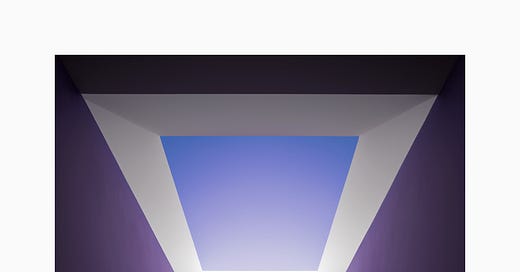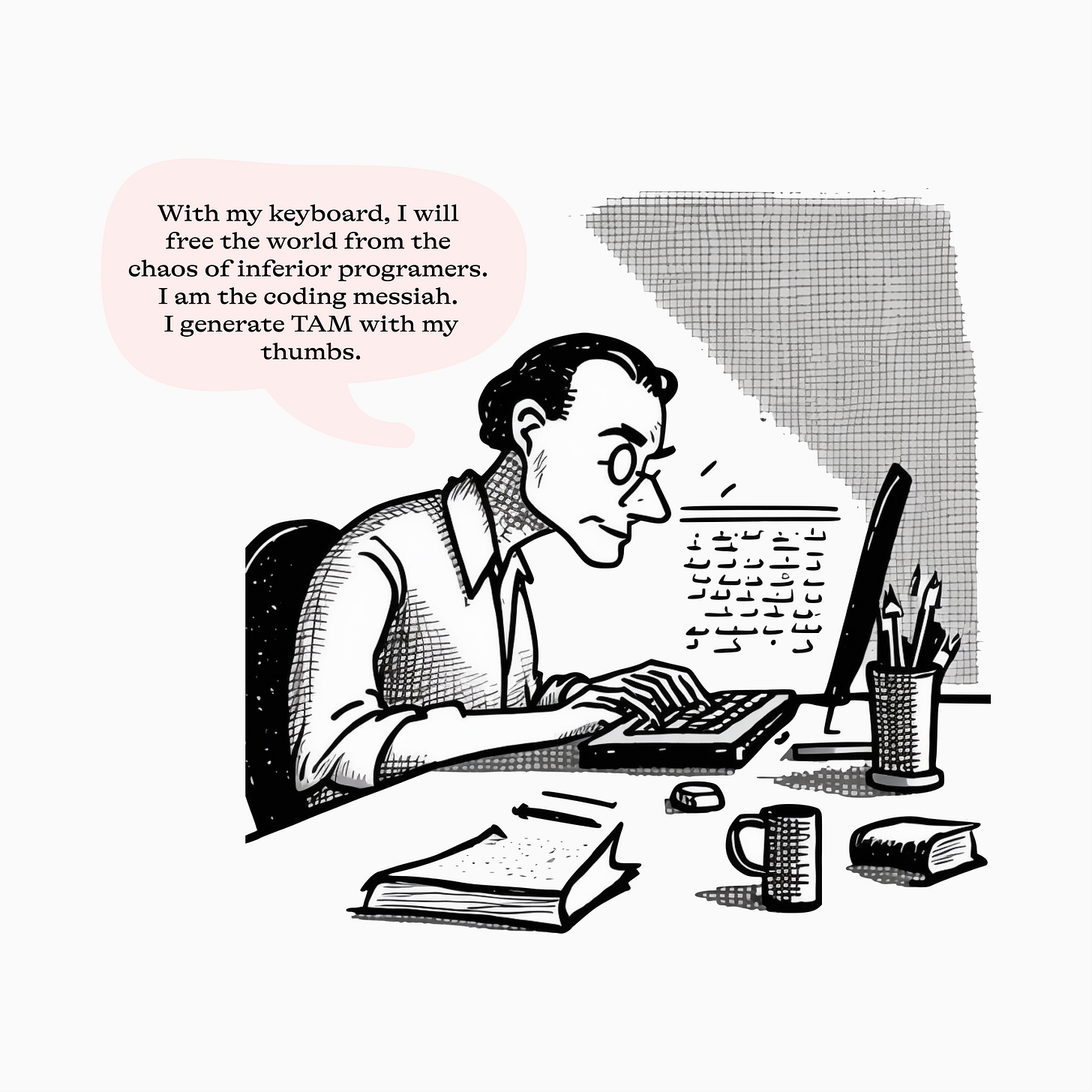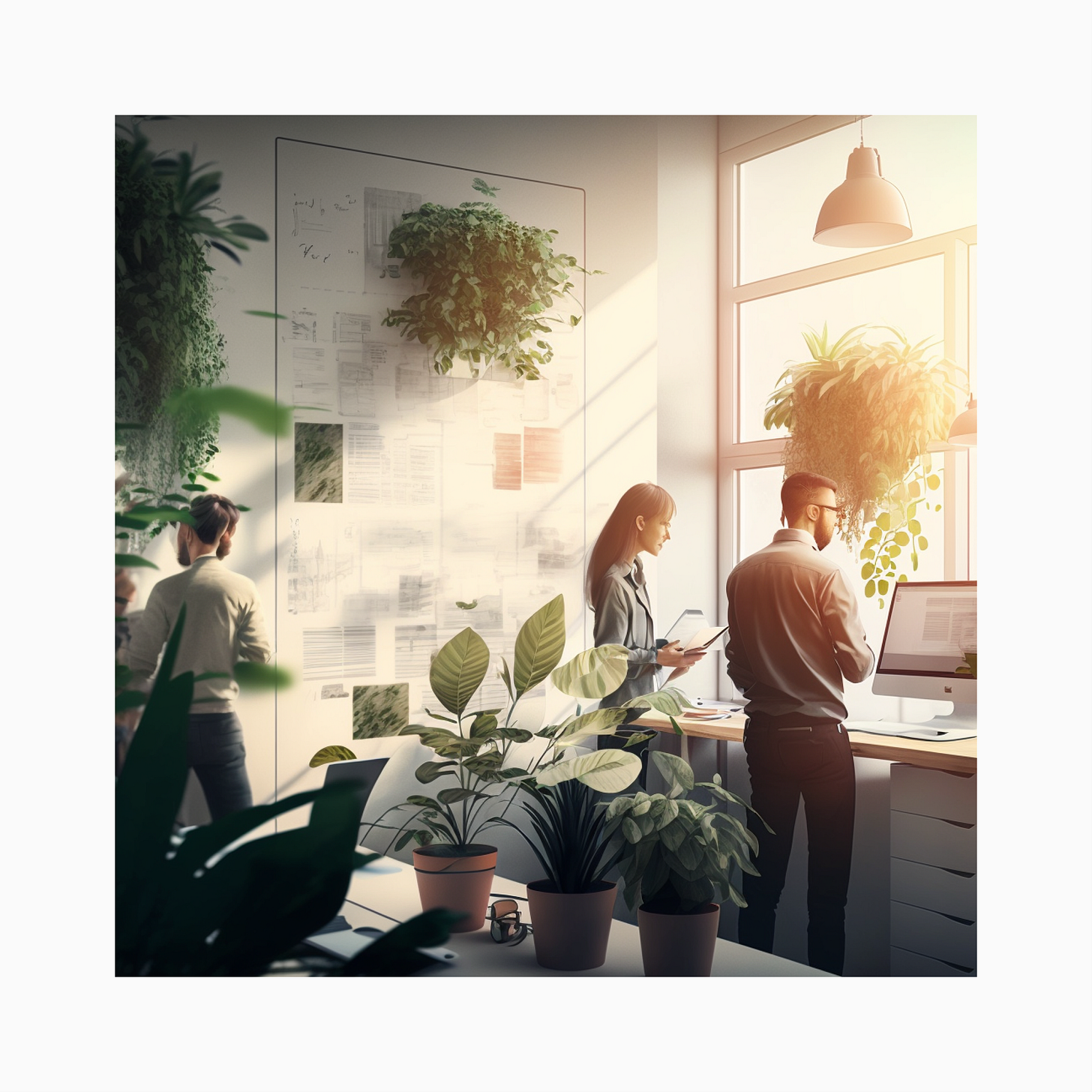Not long ago the idea of a 10X engineer became a meme. It’s hard not to laugh at engineers bringing their computers to the bathroom to code in peace. There’s been research done on the productivity of programmers, and they found there were only 10X+ organizations, not individuals.
If there’s a hypothetical “10x engineer” it’s hard not to imagine a “10X designer”. Instead of skipping meetings to code, this person might take PTO to see the latest Turrell exhibit.
The ideal ratio of designers to engineers is a topic of debate. Some suggest 1 designer for every 10 engineers, while others propose ratios of 1:1, 1:5, or even 1:20. We’ll stick with the median number for symmetry and to make the title pop. If you had a 10X designer working with 10 engineers, you could achieve 100X output, even without the “X” factor engineer. Great designers are an under-appreciated lever in the product organization.
It’s more likely, in my opinion, and according to the research, that there are good and great designers. Not 10X, 2X, or 0.79X versions of the role. Just like you meet good and great people in each area of your work, the same applies to designers.
Updating the meme
Akin to the classic Good Product Manager/Bad Product Manager by Ben Horowitz, I’ll swap the 10X meme and attempt to differentiate between good and great designers.
I’ve been lucky enough to have a taste of what the best designers in the world work like. I don’t know it all. But after a decade of design in tech, I feel qualified to speak on the type of designer organizations value and that I look up to. Great designers.
Good Designer/Great Designer
Good designers don’t start work until there’s a well-written brief or PRD. Great designers shape requirements and update them based on their experience and knowledge. Good designers approach the design from a user-centric perspective. Great designers inject the user perspective with the company’s product strategy, unknown user needs (that didn’t come up in research), taste, and vision. They don’t give users a faster horse.
Good designers obsess over details. Great designers lay a rock-solid design foundation. They execute only what they have perfected, and call in experts as needed.
Good designers stick to design. Great designers influence across the product team and larger org. Good designers create. Great designers steal.
Great designers instantly execute perfect design*. Great designers have a library of preferred patterns in their minds. Great designers get to “this is easy to use”, quickly. Great designers have varying degrees of risk and artistic expression. They understand the context of the solution and what it requires. Great designers hold back when a unique interaction pattern might be too much for the product. They lean in when the product needs it.
Great designers have great taste (which can’t be taught).
Great designers say “no”, a lot. They say it eloquently. They say it in a way that improves team morale and motivation, and they say it in a way that improves the product.
Great designers influence the product strategy, business, and ultimately company. They each do it in their own way.
For great designers, there’s no question the UI is well executed, accessible, and adheres to timely patterns present in the culture. They do this while challenging core assumptions and aligning people outside of the area of their responsibility.
Great designers unofficially inspire, encourage, and mentor. They’re not managers, and they’re not coaches. They do this by executing the complex matrix of requirements to the highest quality.
Everyone wants great designers on their team.
I’m not sure we need to quantify at what level each person is multiplying the organization. I’m not sure we can. Personally, I get more excited about growing, in any direction. The most rewarding for me is helping others and watching as they grow themselves. Every designer is unique (just like each solution). The fun part is the alchemy. The synthesis, the taste, the influence. That’s the special sauce.
* nothing is ever perfect-perfect, design is never done, etc. “Perfect” meaning indistinguishable from the best possible solution.
This article uses AI-generated images.







